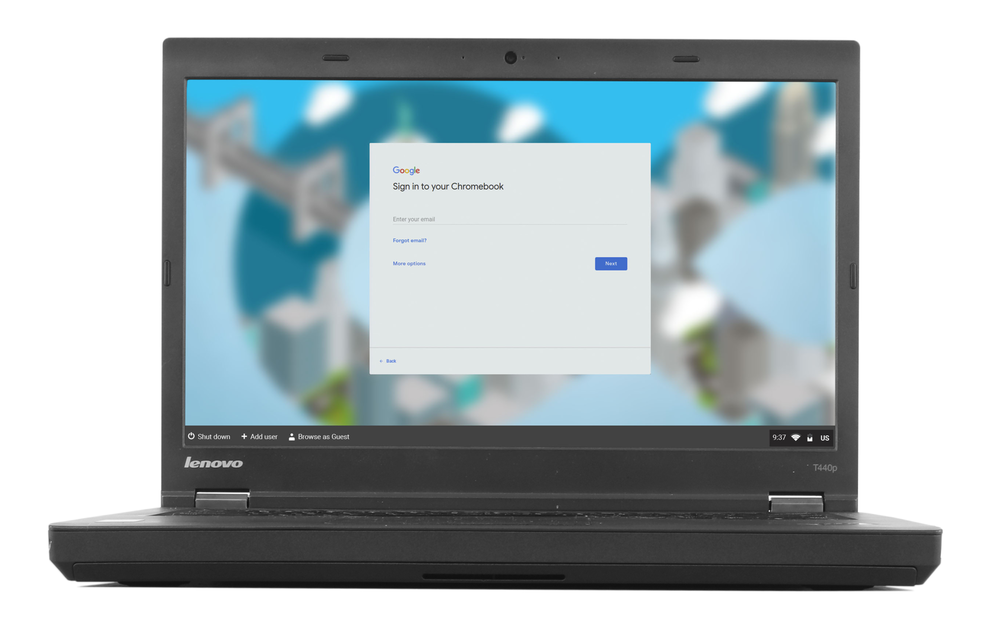Software Review: CloudReady
2nd November 2019
Hugh Macdonald

Like me, you might have always wondered whether a Chromebook would be a useful computing device for everyday use. But also like me, you might have been reluctant to actually purchase a Chromebook, lest it wasn’t suitable, and you were left with an underwhelming computer you couldn’t do much with. Well now there is free software called CloudReady that can turn any old laptop you have lying around the house into a Chromebook, so you don’t actually have to make any financial outlay. All you need in addition to the old laptop is a USB stick. In this article I’m going to go through the process of installing CloudReady and setting up a ChromeBook.
The first step is to prepare for CloudReady installation. This involves heading to https://www.neverware.com/freedownload and downloading the CloudReady USB Maker if you’re running Windows, or an image file if you’re running Mac OS or Linux. If you use the USB Maker in Windows it’s a very simple process. You simply run the program, insert a USB stick when prompted, and after about 20 minutes you’ll have a USB installer ready.
The next step is to find an old laptop suitable for turning into a Chromebook. I have an old Acer Aspire One netbook, which so many years later, feels very underpowered with its Atom processor and 4GB RAM running Windows 7. So I’m hopeful that Google’s lightweight operating system will be just the ticket to give this machine a new lease of life.
Once you have your laptop and USB stick ready you just need to have the USB stick inserted when you turn the laptop on and be ready to press a function key (the exact one varies by laptop manufacturer so search for the model of your laptop) to bring up the boot device selection menu and choose the USB stick. After a few moments you should see the CloudReady logo on your screen and it will begin to boot Chromium OS (yes it’s the open source version of Chrome OS here) from the USB stick. Once it loads up you’ll be prompted to select your wifi network (it won’t setup if you don’t have one to select) and then you’ll be prompted to sign in with your Google account (it is once again necessary to have a Google account in order to sign in).
After that you’ll boot into Chromium OS and you are free to try out the operating system directly from the USB stick. I will review the operating system in depth next month, however in short it centres on the Chrome browser, a Files application that you can use to organise your documents, and any number of progressive web applications (PWAs) that you can download from the Chrome store.
If you decide you want to setup Chromium permanently on your hard drive, you just have to click on the clock in the bottom right corner of the screen and from the box that pops up choose ‘Install OS’. From here you follow a few prompts to confirm that you do want to install Chromium OS and have it overwrite your hard drive. You then have to wait for around 20 minutes while it installs (although it’s probably faster on a machine with a more powerful processor and a solid state drive). After this it will reboot and you’ll have Chromium OS on your hard drive. It will remember the Google account that you initially signed up with, so you won’t need to do any of that again.
I have a few initial thoughts on Chromium OS. It’s definitely nice and lightweight compared to any version of Windows. The old and under-powered Acer Aspire One boots up in no time now, and use of the Chrome browser with a few tabs open is quite responsive. However old habits die hard I guess, and as a long time user of Windows, Linux and Mac OS on my machines, I feel anxious about the lack of applications I’ll have at my disposal. I’ll see how I go at finding Chromium equivalents to the applications I use on a daily and weekly basis.
For someone who isn’t a computer enthusiast, I can see how Chromium OS would be a breath of fresh air. It is essentially just a web browser, and if that’s all you use your laptop for, then you won’t feel like you’re missing out. You won’t have to worry about installing applications, running updates, or doing anything much at all in terms of configuring settings with Chromium OS and CloudReady.
So the bottom line is if you’ve always wanted to try a Chromebook and you have an old laptop on hand, then downloading CloudReady is a simple way to try out the experience. Additionally, if you’ve got family members or friends who could benefit from a really simple computing experience that centres around using a web browser, then setting up CloudReady for them might be of benefit too.


